PSYCH 229DE Introduction to Developmental Psychopathology & Causes of Childhood Disorders
1/111
Earn XP
Description and Tags
Quiz 1
Name | Mastery | Learn | Test | Matching | Spaced |
|---|
No study sessions yet.
112 Terms
Psychopathology
The scientific study of mental disorders; theory, etiology, treatment
Developmental psychopathology
A multidisciplinary approach to understanding child development and the emergence of children’s mental health problems over time
Etiology
Possible causes
The DSM-5 indicated that a mental disorder has the following components:
(a) involves a significant disturbance in thinking, emotional regulation, or behavior caused by a dysfunction in the basic psychological, biological, or developmental processes involved in normal development;
(b) causes significant distress or difficulty with day-to-day functioning; and
(c) is not merely a culturally expected response to common stressors or losses or a reflection of political or religious beliefs that conflict with societal norms
The four D’s of psychopathology:
-Deviance
-Distress
-Dysfunction
-Dangerousness
Deviance is determined by:
-Statistical standards (infrequency)
-Moral or religious beliefs (deviations from religious doctrine)
-Noncompliance with societal customs (departure from normative behavior)
Infrequency
atypical; lower prevalence
When assessing typicality, one must consider:
-Age
-Home environment
-Culture
-Attention seeking due to needs not being met
-The individual (who)
-What context the behavior occurs in
-What purpose the behavior serves
Risk (vulnerability) is not ___ ___
sufficient cause
Social norms
Socially determined beliefs about what is expected/typical in a given context
Examples of social norms:
-Shaking hands
-Saying hello
-Not wearing pajamas to school/work
Culture
Values, knowledge, and practices that people derive from membership in social groups
Cultural relativism
All social norms depend on their cultural context; our lifestyle, cultural values, and worldview affect our behavior and rules for emotional expression
-Cultures vary in what they define as normal vs. abnormal
Cultural universality
Refers to the perspective that symptoms of mental disorders are the same in all cultures and societies
No act is ___ in and of itself
deviant
Deviance is a ___ process; it is not ___
social; inherent (to an individual)
Anosognosia
The inability to recognize one’s own mental confusion
Dysfunction
-Role dysfunction: comparing someone’s performance with the requirements of a role; comparing an individual’s performance with their potential
Developmental psychopathologists try to identify the causes of children’s disorders across three broad levels of analysis:
-Biological
-Psychological
-Social-cultural (sociocultural)
Biological analysis
Genes, brain structure & functioning, and physical health & development
Psychological analysis
Thoughts, feelings, and actions
Social-cultural (sociocultural) analysis
Family, friends, schools, neighborhoods, ethnicity, and cultural background
Probabilistic epigenesis
The way factors on each level interact to shape children’s development over time
How disorders are classified:
-Observational: What types of symptoms?
-Biological: Blood, genetic, viral tests
-Panel of experts
The DSM-5 is based on a ___ model
medical
In the DSM-5, disorders are grouped into ___ ___; you either meet ___ or you do not
discrete categories; criteria
Adaptive behavior
Allows children to develop social, emotional, and behavioral competence over times and meet the changing demands of their environment
Maladaptive behavior
Interferes with children’s social, emotional, and behavioral competence or does not meet the changing demands of the environment
Adaptive and maladaptive behaviors can only be understood in the context of the child’s ___ and ___
development, environment
Developmental psychopathology models & theories
-Biological
-Psychological
-Social
-Sociocultural
-Biopsychosocial/ecological systems model
Ecological systems model
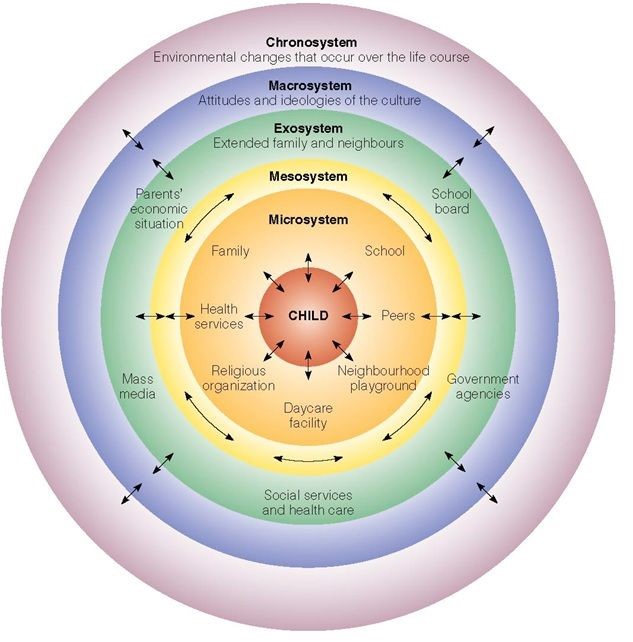
Children’s environment can be viewed as a hierarchy of concentric systems with each smaller system nested inside the others like stacked cups
Developmental tasks
Challenges that depend largely on children’s age and developmental level
Developmental pathway
The course of trajectory of children’s development
Types of continuity in development
Homotypic & heterotypic
Homotypic continuity
Domains persist from childhood to adolescence or adulthood relatively unchanged (e.g. intellectual disabilities, ASD; problems with cognitive or social functioning, respectively)
Heterotypic continuity
Symptoms change over time, but the underlying pattern of behavior remains the same (e.g. hyperactivity in a 5-year-old vs. a 30-year-old)
The interaction between factors over time produces two phenomena:
Equifinality & multifinality
Equifinality
Occurs when children with different developmental histories show similar developmental outcomes
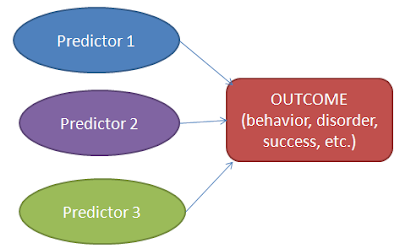
Multifinality
The tendency of children with similar early experiences to show different outcomes

Risk factors
Influences on development that interfere with the acquisition of children’s competencies or compromise children’s ability to adapt to their environments; can be biological, psychological, or sociocultural
Protective factors
Biological, psychological, and sociocultural influences that buffer the negative effects of risks on children’s development and promote adaptation
The salience of a risk factor depends on the child’s ___, ___, ___, and ___
age, gender, level of development, environmental context
Resilience
The tendency of some children to develop competence despite the presence of multiple risk factors
What does the biological model say about treatments?
Our biology is responsible for who we are, thus all treatments are biological
Genes
Made up of segments of DNA; organized into chromosomes
Histones
Can turn genes “on” and “off” by binding to them in certain ways
Neurotypical individuals have the same ___; differences in people’s appearance come from slight variations in these
genes
Alleles
Slight variations in genes (phenotypic variations)
No ___ direct ___
genes, behavior
Genes can lead to certain ___ changes in our bodies that predispose us to ___
structural & functional, behave in certain ways
Family study
Correlation between something among relatives vs. non-relatives
Shared genetics percentages between different relational levels
-Monozygotic twins: 100% of genes
-Dizygotic twins: 50% of genes
-Siblings: ~50% of genes
-Non-siblings
Relative risk
Odds of a diagnosis for a family member to a family member with the same diagnosis vs. to a child without the diagnosis
Diathesis-stress model (GxE)
There is some inherited risk (diathesis) that can increase odds of exhibiting a disorder if a person also experiences stressors

Principles of brain development
The brain consists of 100 billion neurons.
Neurons communicate using chemical messengers.
The brain is organized from the bottom up.
Higher-order regions may not mature until adulthood.
Experience can affect the brain.
Neuron
A nerve cell that is typically very narrow and long; relays information electrically, by controlling the positively and negatively charged particles that are allowed to enter the cell
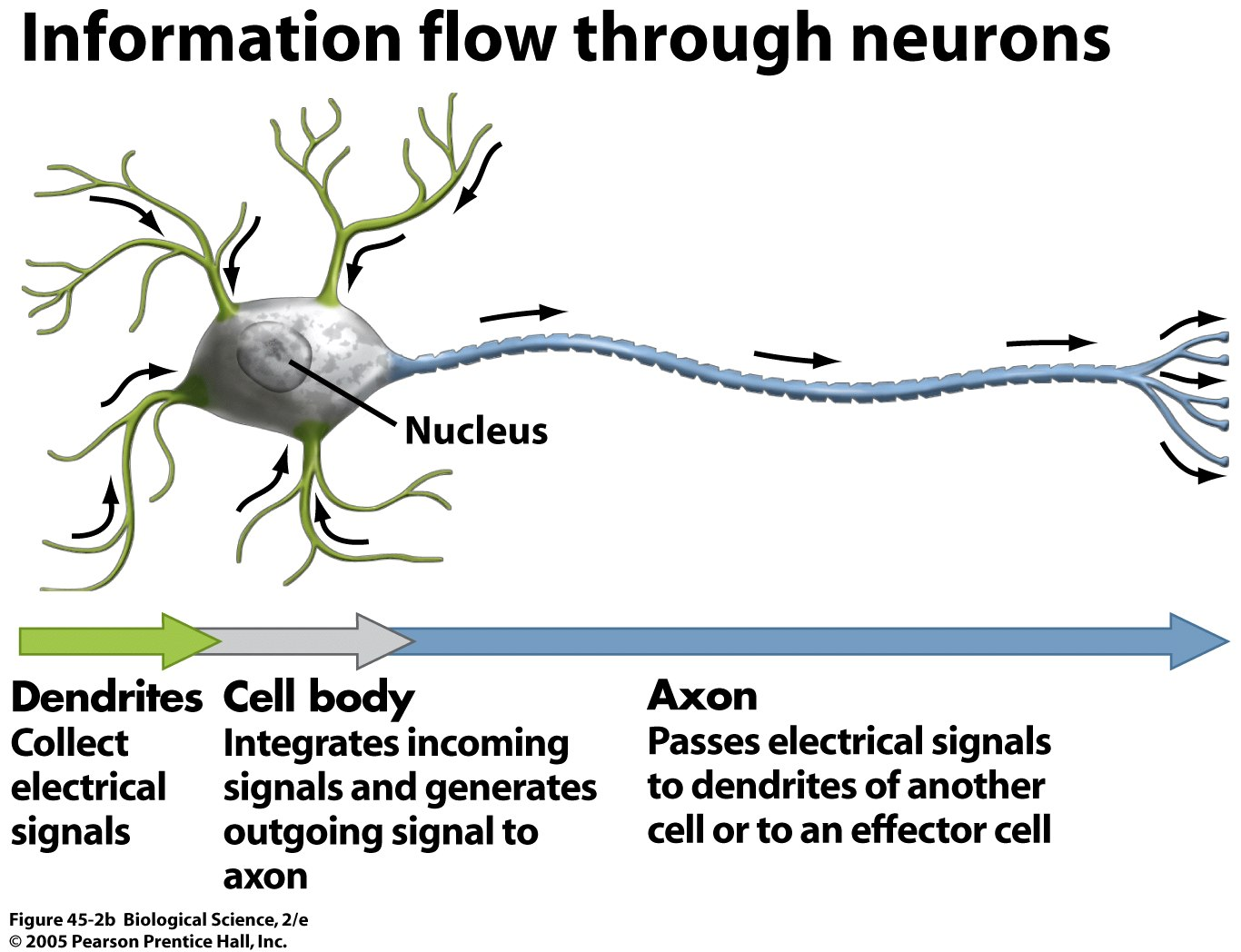
Neurotransmitter
A chemical messenger that is released into the synapse when an impulse reaches the end of an axon; in the synapse, it can be detected by other neurons, causing them to change their electrical charge
Synapse
A small cleft (space) between two neurons
How neurons communicate:

A sensory neuron detects a stimulus and converts it to an electrical signal that travels along the end of the neuron to the terminal
The signal, at the axon terminal, releases neurotransmitters into the synapse
The neurotransmitters bind to receptors on the dendrite of the other neuron
Information travels within neurons ___, but it travels between neurons ___
electrically, chemically
Excitatory neurotransmitters
Increase the positive charge of neurons, making them more likely to become active (e.g., dopamine)
Inhibitory neurotransmitters
Increase the negative charge of neurons, making them less likely to become active (e.g., GABA)
Reuptake
Decreases the number of neurotransmitters in synapses
Brain stem
Largely responsible for basic metabolic functions (i.e., heart rate, respiration, arousal)
Consists of:
Medulla
Pons
Midbrain
Cerebellum
Responsible for balance and coordinated motor activity
Basal ganglia
Helps control movement, filters incoming information from the senses and relay it to other brain regions, regulation of attention and emotions
Limbic system components
Amygdala & hippocampus
Amygdala
Aids in understanding and expression of emotions, especially negative feelings such as fear and rage; fear response (fight, flight, freeze)
Hippocampus
Emotional processing, especially the formation of emotion-laden memories
Cerebral cortex
The outermost shell of the brain, divided into four lobes:
Occipital lobe
Parietal lobe
Temporal lobe
Frontal lobe
Occipital lobe
Visual processing
Parietal lobe
Integrating visual, auditory, and tactile information
Temporal lobe
Hearing, language, expression and regulation of emotions
Frontal lobe
Language production, problem-solving, memory
Prefrontal cortex
Planning, organizing, prioritizing activities to meet long-term goals
Neurochemical/biological model treatments of disorders target:
Brain chemistry
Common treatments targeting brain chemistry
Psychotropic medications
Deep brain stimulation
ECT
Psychosurgery
Psychotropic medication
Prescription medication used to treat behavioral, cognitive, or mood problems
Learning theory
Behaviorism; children’s behavior is largely determined by environmental contingencies
According to learning theory, learning occurs in three ways:
Classical conditioning
Operant conditioning
Imitation or modeling
Operant conditioning
Children associate an action with a consequence in the environment; behaviors are modeled based on the actions of others
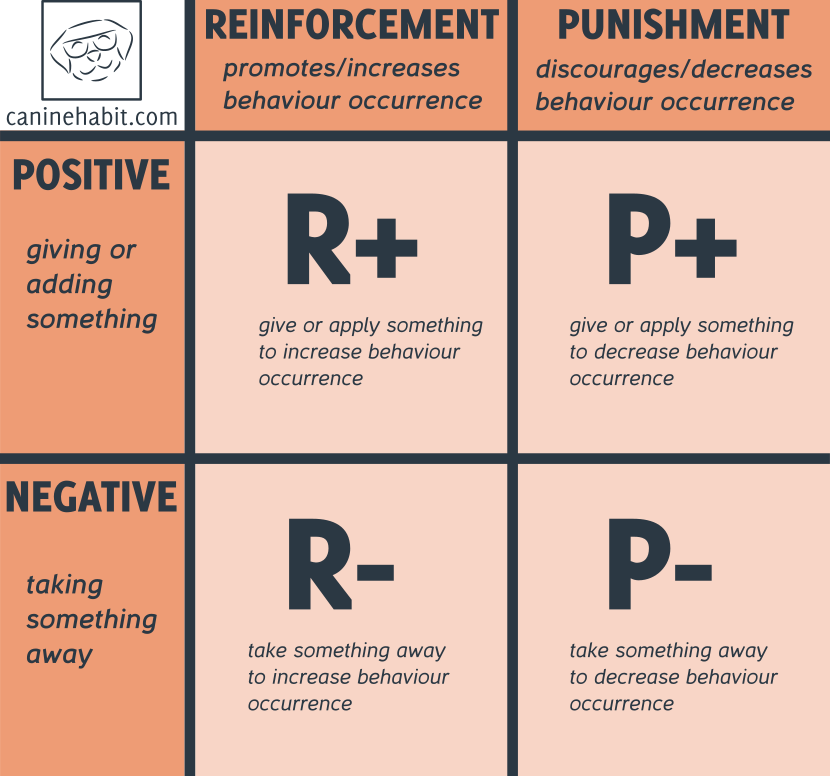
Reinforcement
Anything that increases the likelihood of behavior
Positive reinforcement
An individual is presented with a stimulus that increases the likelihood of behavior; something is added (e.g., a child given ice cream after eating vegetables at dinner)
Negative reinforcement
The withdrawal or avoidance of a stimulus increases the likelihood of behavior; something bad is removed (i.e., avoiding raising hand in class so you are not called on and feel distress)
Punishment
Decreases the probability of future behavior
Positive punishment
A stimulus presentation that decreases the likelihood of behavior (i.e., spanking a child for disobedience)
Negative punishment
Avoidance or removal of a stimulus that decreases the likelihood of behavior (i.e., a teacher removing a child from the classroom following disruption)
Classical conditioning
Automatic (involuntary) response paired with novel stimulus (i.e., dog salivates when it sees food; ring bell and present food, dog salivates; the dog will eventually salivate at the ringing of the bell alone)
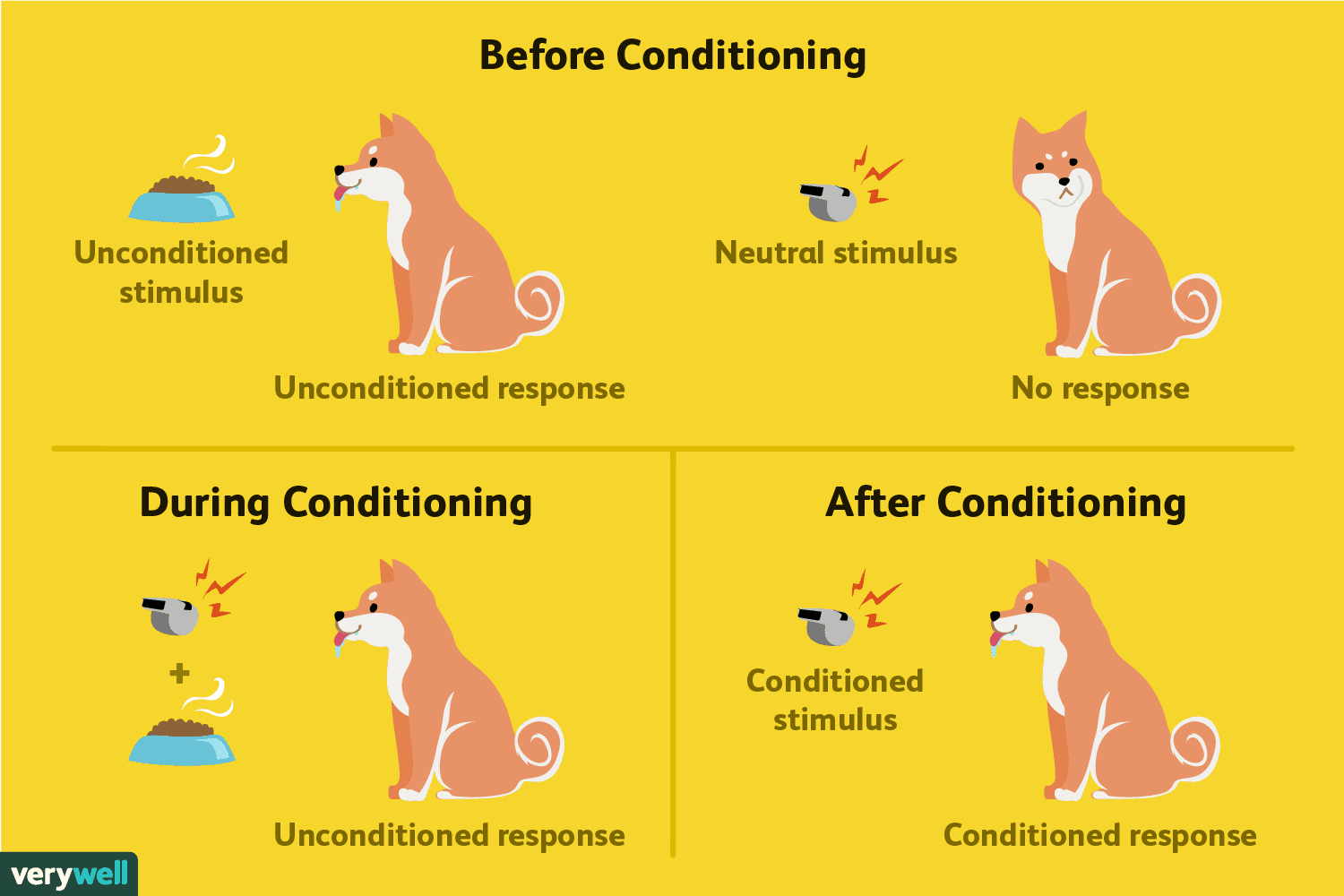
Social learning theory
Learning through imitation or modeling is a primary mechanism of behavioral acquisition
Temperament
An infant’s characteristic pattern of actions and emotions in response to environmental stimuli; remains relatively stable over time and across situations
Attachment
The emotional bond between caregiver and child that serves to protect and reassure the child in times of danger or uncertainty
Attachment styles
Secure
Insecure
Anxious
Avoidant
Disorganized
Insecure attachment is particularly associated with ___
inconsistent caregiving
Parenting styles
Authoritative
Authoritarian
Indulgent
Uninvolved
How do biological theorists explain abnormal behavior?
An illness brought about by malfunctioning parts of the organism
Brain circuits
A network of particular brain structures that work together, triggering each other into action to produce a distinct behavioral, cognitive, or emotional reaction
Fear circuit
Interconnecting fiber pathways enables structures (prefrontal cortex, anterior cingulate cortex, insula, and amygdala) to trigger each other into action to produce our everyday fear reactions
Psychodynamic model
A person’s behavior, whether normal or abnormal, is determined largely by underlying psychological forces of which the individual is not consciously aware
Psychodynamic therapies/treatments
Therapists subtly guide therapy discussions so that the patients discover underlying problems for themselves; uses techniques including:
Free association
Therapist interpretation
Catharsis
Working through
Cognitive-behavioral model
Focuses on the behaviors people display and the thoughts they have; how behavior affects thinking and how thinking affects behavior